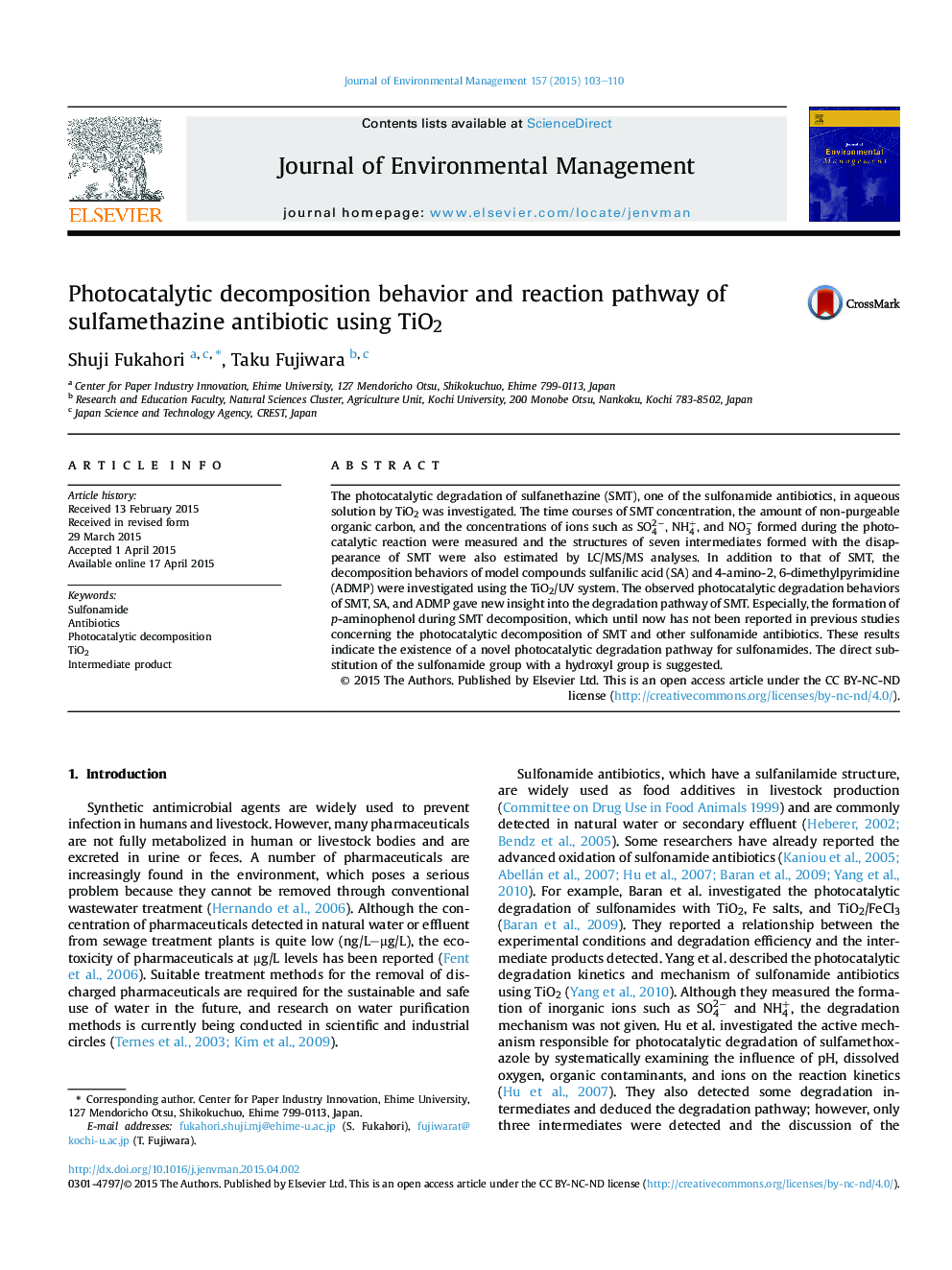| Article ID | Journal | Published Year | Pages | File Type |
|---|---|---|---|---|
| 7482141 | Journal of Environmental Management | 2015 | 8 Pages |
Abstract
The photocatalytic degradation of sulfanethazine (SMT), one of the sulfonamide antibiotics, in aqueous solution by TiO2 was investigated. The time courses of SMT concentration, the amount of non-purgeable organic carbon, and the concentrations of ions such as SO42â, NH4+, and NO3â formed during the photocatalytic reaction were measured and the structures of seven intermediates formed with the disappearance of SMT were also estimated by LC/MS/MS analyses. In addition to that of SMT, the decomposition behaviors of model compounds sulfanilic acid (SA) and 4-amino-2, 6-dimethylpyrimidine (ADMP) were investigated using the TiO2/UV system. The observed photocatalytic degradation behaviors of SMT, SA, and ADMP gave new insight into the degradation pathway of SMT. Especially, the formation of p-aminophenol during SMT decomposition, which until now has not been reported in previous studies concerning the photocatalytic decomposition of SMT and other sulfonamide antibiotics. These results indicate the existence of a novel photocatalytic degradation pathway for sulfonamides. The direct substitution of the sulfonamide group with a hydroxyl group is suggested.
Related Topics
Physical Sciences and Engineering
Energy
Renewable Energy, Sustainability and the Environment
Authors
Shuji Fukahori, Taku Fujiwara,
